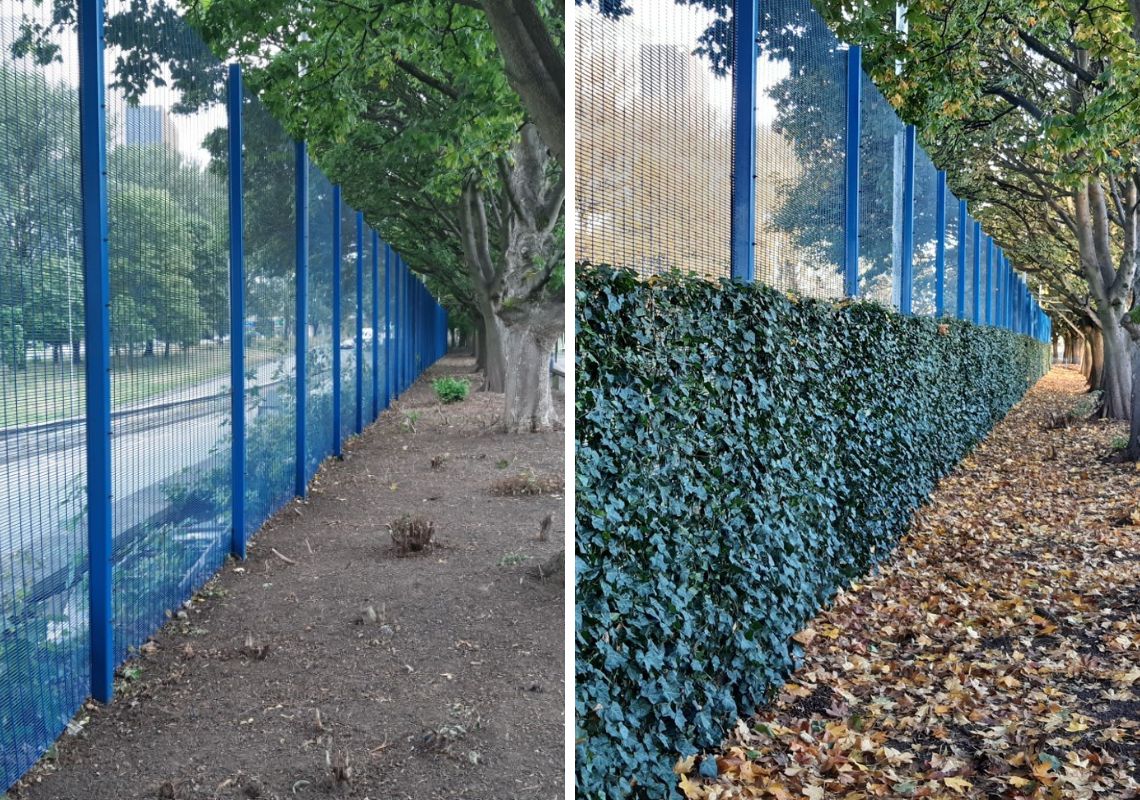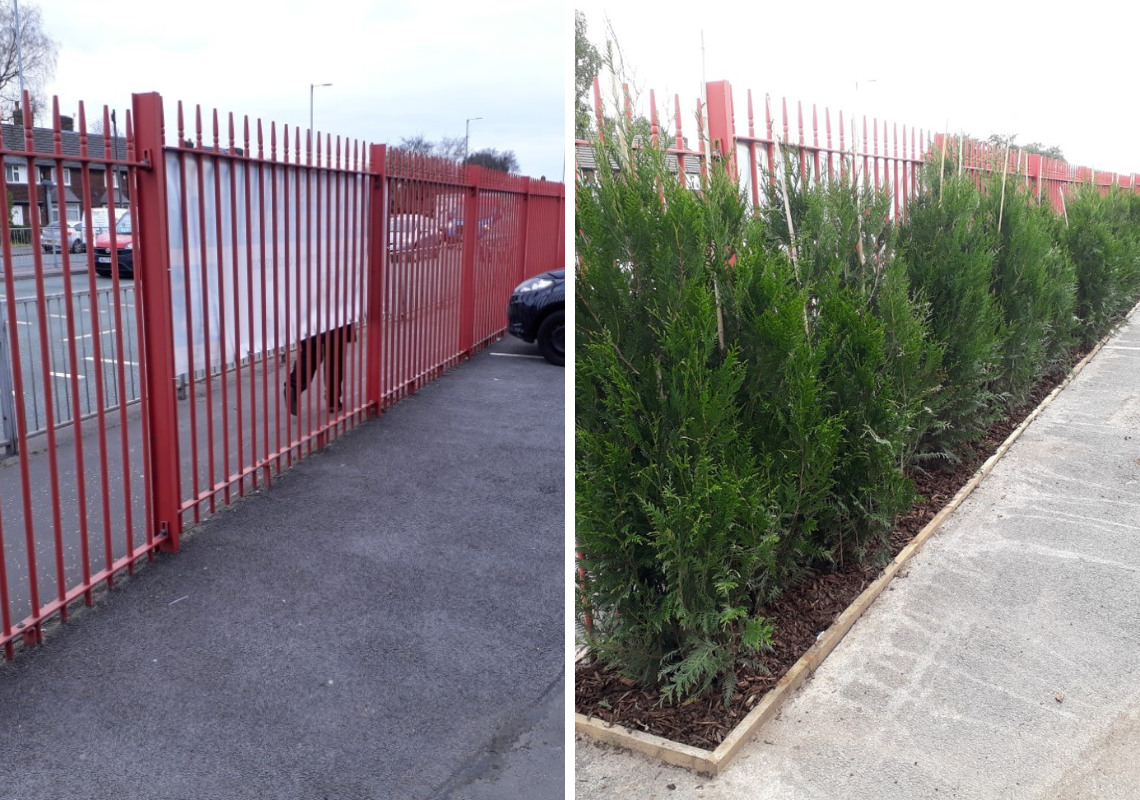Protecting Playgrounds
Background
It’s estimated that about 6,500 schools across the UK are in areas with dangerous levels of air pollution. In Greater Manchester, several schools have recorded high levels of pollutants in their playgrounds, all of which exceed acceptable EU levels of pollution, most likely due to their proximity to major roads and nothing but a mesh fence acting as a barrier.
It’s well evidenced that exposure to air pollution leads to cardiovascular, respiratory and neurological health problems, with the young and the old effectively more severely.
That’s why Groundwork Greater Manchester teamed up with Lancaster University, Manchester City Council and Transport for Greater Manchester on the Protecting Playgrounds project.
The project was designed to test the use of hedges with different species mix, density, height and leaf shape in order to find the most effective solution to reduce the most harmful airborne pollutants around school playgrounds.
What we did
Groundwork Greater Manchester installed ‘tredges’ (trees managed as a head-high hedge) at three Manchester primary schools during the summer school holidays of 2019.
Each school was made up a different species;
- One school had an ivy screen installed
- Another had western red cedar
- The third school had a mixture of western red cedar, Swedish birch and an inner juniper hedge
- A fourth school, with no planting, was used as a control

St Philip’s Primary School – Before & After

St Ambrose Primary School – Before & After
Monitoring of pollution levels before and after the trenches were installed, was undertaken by the University of Lancaster.
The Scientific Results
The school with the ivy screen saw a substantial reduction in playground particulate matter concentrations, but an increase in black carbon.
The playground with the mixture of planting saw lower reductions in air pollution to that of the western red cedar.
The biggest overall reductions in particulate matter and black carbon were shown at the school with western red cedar planted. The results showed almost half (49%) of black carbon and around 46% and 26% of the fine particulates, PM2.5 and PM1 emitted by passing traffic were captured by the western red cedar tredges.
The tredges also significantly reduced the magnitude and frequency of acute ‘spikes’ in air pollution reaching the playgrounds.
Professor Barbara Maher, who led the research process at Lancashire University said:
“Our findings show that we can protect school playgrounds, with carefully chosen and managed tredges, which capture air pollution particulates on their leaves. This helps to prevent at least some of the health hazards imposed on young children at schools next to busy roads where the localised air quality is damagingly poor, and it can be done quickly and cost-effectively.”
Protect Your Playground
Groundwork’s landscape architects and landscaping team are equipped to support schools to develop and install green screens which reduce pollution in our playgrounds.
Unfortunately, there are no specific funding streams available for schools to install green screens, however local funding options may be available depending on your location.
If you work for a school that would like to explore the costs of install a green screen to help protect your playground please email us on greatermanchester@groundwork.org.uk and we’ll be in touch to share our insights and prices.
Thank you to our project partners:

